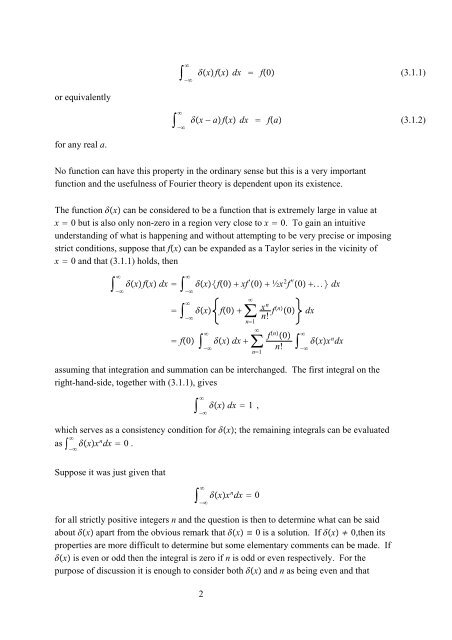Fourier Transforms
Fourier Transforms
Fourier Transforms
You also want an ePaper? Increase the reach of your titles
YUMPU automatically turns print PDFs into web optimized ePapers that Google loves.
−xfx dx f0 (3.1.1)or equivalently−x − afx dx fa (3.1.2)for any real a.No function can have this property in the ordinary sense but this is a very importantfunction and the usefulness of <strong>Fourier</strong> theory is dependent upon its existence.The function x can be considered to be a function that is extremely large in value atx 0 but is also only non-zero in a region very close to x 0. To gain an intuitiveunderstanding of what is happening and without attempting to be very precise or imposingstrict conditions, suppose that fx can be expanded as a Taylor series in the vicinity ofx 0 and that (3.1.1) holds, then−xfx dx xf0 xf ′ 0 ½x 2 f ′′ 0 ... dx− x f0 −∑ f0 −n1x dx ∑n1xnn! fn 0 dxf n 0 xxn! n dx−assuming that integration and summation can be interchanged. The first integral on theright-hand-side, together with (3.1.1), gives x dx 1,−which serves as a consistency condition for x; the remaining integrals can be evaluatedas xx n dx 0.−Suppose it was just given that xx n dx 0−for all strictly positive integers n and the question is then to determine what can be saidabout x apart from the obvious remark that x ≡ 0 is a solution. If x ≠ 0,then itsproperties are more difficult to determine but some elementary comments can be made. Ifx is even or odd then the integral is zero if n is odd or even respectively. For thepurpose of discussion it is enough to consider both x and n as being even and that2
















